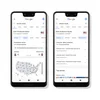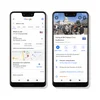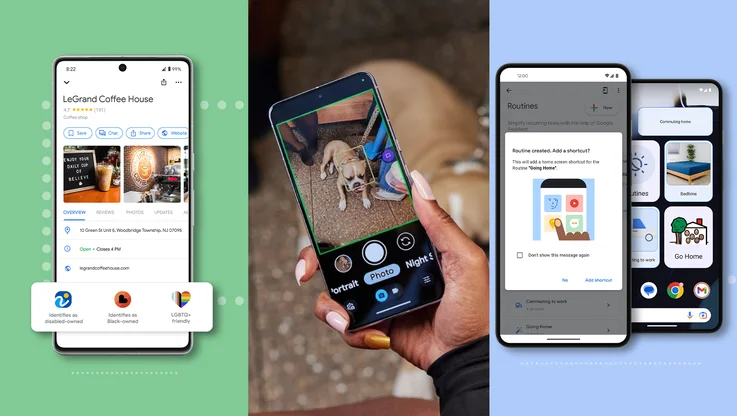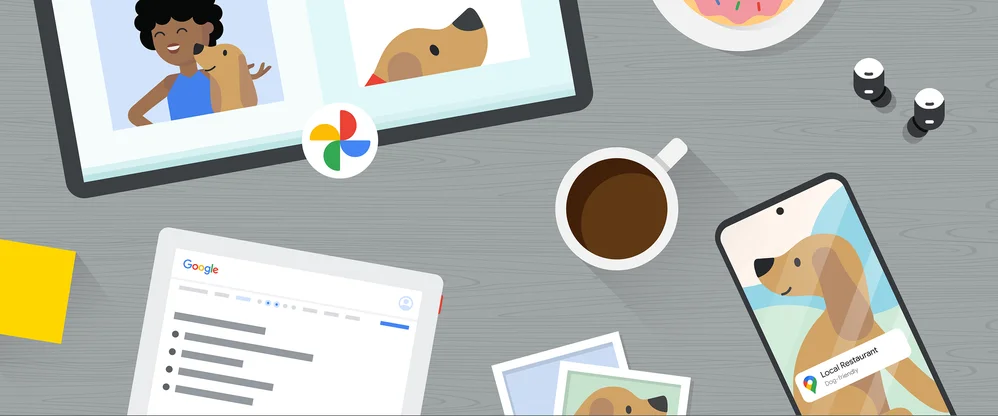Following the 2020 U.S. Election with Google
With just one week to go until Election Day in the U.S., we’re here to help you to navigate the voting process and follow results after the polls close. As they do every election, Americans are turning to Google to find information on voter registration, polling locations, election results and more.
As we look toward Election Day, we’re working with The Associated Press (AP)—a trusted source of information on election results—to provide authoritative results on Google. Similar to previous elections, when people come to Search and Assistant looking for information on election results they’ll find a dedicated feature with data provided by the AP. Simply search for “election results” and you’ll find real-time information on Google, for both federal and state level races, in more than 70 languages. You can also ask, “Hey Google, what are the current election results?” and Google Assistant will share information on mobile, smart speakers and Smart Displays.

As we’ve done for previous election nights, we’ll feature real-time election night live streams from major news providers on YouTube and link to coverage from news sources on Google Search. You can read more here about how to follow the election on YouTube. You can also check out our 2020 US Election experience on Google News, which lets you follow national and local news, major interviews, and in-depth analysis so you can stay up to date and informed on Election Day and beyond.
In the many months leading up to Election Day, we have consistently focused our efforts on helping voters, protecting our platforms from abuse, and equipping campaigns. In advance of nationwide voter deadlines -- which varied significantly by state -- we helped make it easier for you to find your local deadlines, requirements and voting options. We were proud to partner with the nonpartisan National Voter Registration Day again this year to spread awareness about voter registration and make this information accessible and easy for you to find. On YouTube, we surfaced information panels to connect you with authoritative context about relevant election-related search results, including for searches about federal or presidential candidates, voter registration, and how to vote.
Through November 3rd, not only can you come to Google Search and Maps—and ask Google Assistant—for trusted information on how to vote; we’ve also made it even easier for you to find voting locations and ballot drop boxes near you. Just look for “voting locations near me” on Google Search or ask Google Assistant, “Hey Google, where do I vote?” and up-to-date results will surface.

Our global Trust and Safety teams and our Threat Analysis Group monitor our platforms around the clock for potential abuse. Over the past few years, we’ve made numerous changes to secure our platforms and the integrity of elections around the world. This year, we’ve further increased transparency around these efforts: we launched the quarterly Threat Analysis Group Bulletin to provide regular updates on our work to combat coordinated influence operations across our platforms; in June, we shared information about phishing attempts against the presidential campaigns; and just this month, we published the latest update on our efforts to thwart phishing attempts and disinformation campaigns. In addition to the work our own teams are doing, we’ve continued to meet regularly with law enforcement officials and other technology companies to share leads and threat information around suspected election interference. We will remain in close coordination in the days preceding and following the election. And given the possibility of delayed election results this year (and to limit the potential for ads to increase confusion post-election), we made the decision to enforce our Sensitive Events policy as soon as the polls close on November 3, which will temporarily pause ads referencing the 2020 election, the candidates, or its outcome.
In the many months leading up to Election Day, we’ve made it a priority to equip campaigns with the tools they need to strengthen their own security, protect themselves against digital attacks, and reach voters. When the 2020 primaries kicked off, we teamed up with the Defending Digital Campaigns to provide federal campaigns with free security keys, the strongest form of two-factor authentication. Even in the final days preceding the election, we will continue to educate campaigns about digital security and urge them to enroll in our Advanced Protection Program.
As our Election Cybersecurity Initiative with the University of Southern California’s Annenberg School comes to an end, we’re proud to report that the program’s nonpartisan trainers have educated nearly 4,000 participants in all 50 states -- including elected officials, secretaries of state, campaign staffers, political party representatives, state election directors and more -- on the importance of protecting their campaigns against cyberattacks. Moreover, we’ve seen campaigns use YouTube to reach voters in myriad ways over the course of this election cycle: through live-streamed press conferences and town halls, interactive conversations through Stories and Community, and interviews with creators across the political spectrum.
Whether you’ve already voted, are searching for a drop box, or plan to vote in-person at the polls next week, we’re here to help you find authoritative information, vote, and follow live results as soon as the polls close on Election Day.







